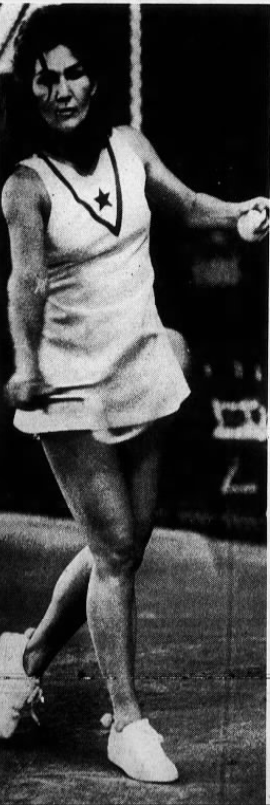In the six years since big-time tennis went “Open,” the line between professionals and amateurs had blurred. No longer were pros relegated to one-night stands in high school gymnasiums; no longer was amateurism a byword for athletic integrity.
Civic groups were, to varying degrees, caught in the middle. The American Tennis Association, an organization for Black players that dated back to 1916, had come of age in the amateur era. It offered playing opportunities for middle-class Blacks who were excluded from the country clubs that dominated American tennis. The ATA also provided a training ground for stars. Althea Gibson first proved her mettle at ATA events. A decade later, Arthur Ashe did the same.
One man hoped that the 1973 ATA Championships would offer a similar springboard. On August 18th, Art Carrington, a 26-year-old from New Jersey, won his first title at the national event. Carrington worked with Sid Llewellyn, the flashy Jamaican who had once coached Gibson, and he had given up his job as a schoolteacher in May to focus solely on tennis.
The ATA tournament, held at the MIT courts in Cambridge, Massachusetts, was a confidence-builder for Carrington, especially after he squandered eleven match points in the previous year’s final. But it was unclear how much the result meant. Amateurs made up most of the field. The runner-up, Doug Sykes, was a 30-year-old tax attorney from San Francisco.
Llewellyn was optimistic about his student’s chances among the pros. “Oh, he’ll make it, all right,” said the coach. “If they don’t break his spirit, he’ll make it.” Gibson and Ashe had opened the door for Black players, but no one had yet followed them. Breaking into the sport wasn’t cheap, and the establishment still had ways of throwing obstacles in the path of aspiring Black players. Carrington preferred not to talk about that. He focused on just one thing: Playing a little better when a big opportunity finally came along.
* * *
The women’s competition revealed even more contrasts in the ATA’s ranks. The runner-up was Jean Burnett, a 33-year-old housewife from New Jersey who had taken up the game because her husband wanted a hitting partner.
The champion, though, was a teaching pro and occasional circuit player named Mimi Kanarek. Kanarek, who had grown up in Nicaragua with Polish parents, wasn’t even Black. The ATA had always welcomed all comers, especially those who didn’t fit in at tennis’s traditional upper-crust venues.
Kanarek made her first appearance at an ATA event back in 1960, when she won a title in Hampton, Virginia. At the time, she was a secretary and translator in Brooklyn, a latecomer to tennis. She steadily climbed the ranks in New York-area tennis, rising as high as the number two ranking in the USLTA’s Eastern region. She won a regional title in 1967 and began running a tennis club in Manhattan.
In 1965, Kanarek’s career took the oddest twist of all: She played a match as part of an art installation conceived by the painter Robert Rauschenberg:
The game pitted the tennis pro Mimi Kanarek against Frank Stella, already one of America’s most radical and celebrated painters. Surrounded by some 1,200 viewers on bleachers, the two strode into the drill hall of the 69th Regiment Armory in New York and faced off across the net. Each time one of them hit the ball, a miniature radio transmitter inside the racket broadcast a loud “bong” and sent a signal extinguishing one of the hall’s 48 overhead lights.
By 1973, she was the assistant pro at a club in Hastings-on-Hudson. Ironically, the one-time outsider now counted New York City mayor John Lindsay among her clients. Now 40 years old, she found that feeding balls to students didn’t help her game: She had never had the “killer instinct,” and she got out of the habit of trying to put balls away.
Kanarek, like Carrington, found herself in the awkward middle ground between amateur and pro. She could beat most amateurs but few professionals. With her ATA trophy in hand, she headed back to New York, where she entered the qualifying draw for the US Open. One second-round loss later, it was back to the club. She had a full slate of lessons ahead of her.
* * *
This post is part of my series about the 1973 season, Battles, Boycotts, and Breakouts. Keep up with the project by checking the TennisAbstract.com front page, which shows an up-to-date Table of Contents after I post each installment.
You can also subscribe to the blog to receive each new post by email:
